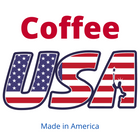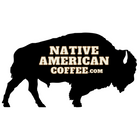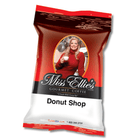Espresso crema should not be confused with "cream", and it doesn't have anything to do with foamed or steamed milk that is often served along with a shot of espresso. The crema is the thick foam layer that naturally forms on the top of a freshly pulled shot of espresso. It's just part of the espresso, and is extremely rich in taste. A properly pulled shot in a coffeehouse will always have a crema layer, though if you make your own espresso at home, you may not always be so lucky. Actually, it's not about luck at all. You need pressure to create espresso crema, so an espresso machine that doesn't have the right amount of pressure won't create the foam. Typically, one of the cheaper steam espresso machines is too weak to give you a crema layer and the same goes for the little stove-top moka pots. That's not to say they make poor espresso. Its just not quite the same without the crema.So you need a pump espresso machine, but there is no guarantee you'll get perfect crema every single time. There is some skill involved, and you have to practice a little bit. A few tips: - Make sure the coffee is ground very fine. The same grind you use for your drip coffee maker will not give you any crema. - Give the grounds a solid tamp before you put the portafilter in the machine. - Fill the portafilter with grounds. Skimping on coffee will mean less crema, or none at all. - A warm cup or carafe can actually help your crema to form, so heat up your cup with a shot of steam or hot water before you pull your shot. - Some say the crema is the best part of a shot of espresso. You can enjoy it directly when having just the espresso but it will get blended into your drink if you are using your espresso in a latte or cappuccino.
Coffee, Coffee, Coffee
Campire Coffee | Coffee Over a Campfire
Brewing coffee over a campfire may seem unnecessarily rustic, but knowing how to make hot coffee in the morning will make you very popular with your tent-mates. There are actually several ways to brew coffee over a campfire, some that require some extra equipment and some that you can try with just a standard cooking pot. Brewing coffee over a campfire may seem unnecessarily rustic, but knowing how to make hot coffee in the morning will make you very popular with your tent-mates. There are actually several ways to brew coffee over a campfire, some that require some extra equipment and some that you can try with just a standard cooking pot. You have a few options on how exactly you want to brew this way. The basic idea is as follows: Step 1 - Fill a pot with about 1 quart of water and heat to a good boil. Step 2 - Add 1 handful (yes, handful) of ground coffee and let it steep away from the fire for about 5 minutes. Step 3 - This is actually very important, so don't skip it. Add about 3 tablespoons of cold water to the mix. This will help settle out the grounds floating around. Step 4 - Carefully pour out the coffee into mugs, not disturbing the grounds on the bottom of the pot. You can double the water and grounds if you are brewing for a larger group of people. Brewing with a Percolator If you don't want to brew coffee over a campfire in a pot, you can always get technical and actually buy some coffee making gadgets instead. The most common is the old percolator. Though percolators aren't the best way to brew coffee around the kitchen, they do work pretty well when your out in the great outdoors. There is a basket inside the pot for the grounds, and the water boils to bubble up through the coffee. You just pour it out when you're ready. Brewing with a French Press A better way to brew coffee when camping is with a French press. You fill the pot with hot water and coffee grounds, then let brew for a few minutes. Push down the plunger, which strains all the grounds out of the coffee to the bottom. Pour at your leisure. The percolator has to stay on the heat to work, which can lead to bitter coffee but a French press does not. You can buy French presses intended for outdoor use, make with nearly unbreakable Lexan instead of glass. Brewing Espresso Brewing coffee over a campfire isn't that impressive, and people do it all the time. If you really want to stand out, why not make fresh espresso while you're at it. A small moka pot makes a decent shot of espresso over a heat source, and all you need is water and coffee grounds. Fill the bottom with water, put grounds in the filter, and attach the top half of the pot. Set over the fire, the water heats up and is forced up into the top half. You don't have to filter out the grounds as they stay between the portions of the pot.
Avoid Bitter Coffee | How to Avoid Bitter Coffee
Knowing how to avoid bitter coffee can be pretty helpful if you are having trouble getting the perfect cup of coffee out of your machine. If you are finding your home-brewed coffee to be unpleasant or bitter, here are a few tips to help. Use Fresh Clean Water Tap water may not be the best option for your coffee brewing, especially if the water is hard (filled with dissolved minerals) or heavy on the chlorine. It can get expensive to buy bottled water, not to mention environmentally unfriendly. A good alternative is to get a jug filter like Brita, and use that water for making your coffee. Some coffee makers even have them built-in, which would make it even easier. Both the minerals in the water and the chlorine can have a negative effect on the coffee's final taste, making it more sour or bitter than it would be otherwise. Get a Lighter Roast People who like a bold and rich cup of coffee naturally lean towards the darker roasts. But darker roasts are also more likely to have some bitterness to them. Try getting some beans that are more lightly roasted, and if they don't have enough flavor switch to a different blend or varietal. You have lots of options, so do some experimenting. Don't Let it Sit Drink your coffee as soon as its brewed, and only brew enough that you will drink within a short time. Coffee that is left sitting on the warming plate will get stale and bitter, making all your later cups of coffee a little off in flavor. So just brew a small pot at a time, or even start using a single-serve coffee maker that brews each cup as you want it. Either way, stale coffee is usually bitter coffee. Stale Beans Stale coffee will get bitter, but it might even be stale as you are brewing it if your beans are old. Pre-ground coffee really only stays fresh for a few days, so any coffee grounds that you have are probably stale to some degree before you use them. A better tasting cup comes from freshly-ground coffee, so if you are getting bitter coffee, you should try buying whole bean and grinding it yourself. It only adds a few moments to your daily coffee routine, and you'll almost certainly have more delicious coffee with every cup.
Alternatives To Cream in Your Coffee
Alternatives to cream in your coffee may not seem like a very important issue, but for anyone who can't handle dairy or just wants something different, it's something to think about.If you prefer the strong taste of your coffee without any additional creamer, you still may want to experiment a little bit from time to time. Soymilk If you are looking for an alternative to cream in your coffee, one healthy option is to try soymilk. Made from soybeans, there are no dairy products in soymilk which makes it suitable for vegans or anyone who is lactose intolerant.There is calcium in soymilk, though not usually as much as in cow's milk, and it can have more fat that 2% milk. If you usually use cream in your coffee, then this won't make much difference to you. Depending on what brand of soymilk you choose, you can get both vanilla and chocolate flavors. The vanilla one is very nice as a coffee creamer due to the sweetness but it doesn't overpower like chocolate.Other non-milk choices include rice milk or even almond milk. Great for vegans too. Non-Dairy Creamers Another alternative to cream in your coffee comes in the form of the new (and very popular) flavored non-dairy creamers. These are liquid products that do have some milk ingredients in them, but are usually lactose-free. They are very rich and come in a variety of flavors that go well in coffee. Some are even fat-free.Vanilla, caramel, Irish cream, hazelnut and mocha are just a few examples. International Delight even has gourmet flavors like white chocolate mudslide, marshmallow mocha and amaretto. These flavored creamers usually come in liquid form, and you add their to your coffee just like you would regular milk or cream.With coffee that is already flavored, these types of creamers may conflict a bit with the coffee or become too overpowering in taste. They are usually best with regular coffee. Non-dairy creamers also come in powdered form, and should be a staple in your pantry for those days when you run out of liquid creamers. These types are usually plain and won't be as rich as the liquid ones. But they will last on the shelf for a very long time, and do come in handy when you need them. A spoonful or two dissolves quickly in hot coffee for that creamy touch.Powdered creamers are not ideal for iced coffee recipes, because they don't dissolve very well in cold liquids. If you want to use them cold, you will need to dissolve them in hot coffee before you chill it.






